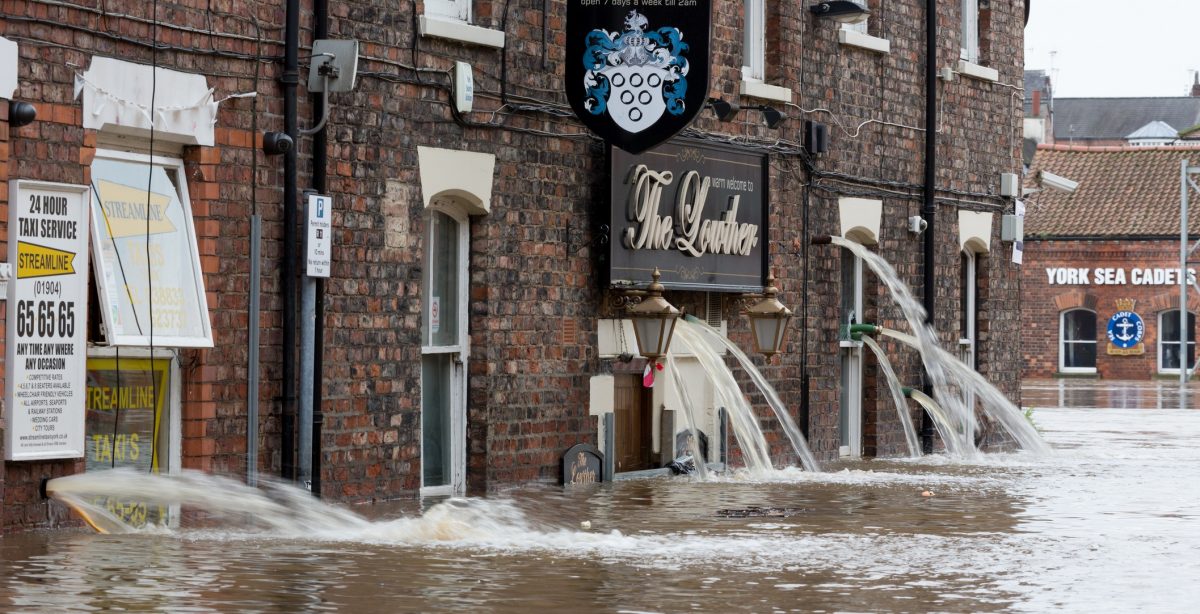
Britain’s Fast Approaching Flood Nightmare By Stanley Amies
Today is a scary time for the owners of coastal properties in the UK, with 2.4 million homes at risk of flooding from the seas or rivers. Yet as sea levels rise, tomorrow will just get more and more frightening.
But it is not just those by the sea who have reason to fear, for the UK Government Environment Agency now estimates that 5.2 million, or 1/6 of UK properties are at a high risk of flooding. This is largely due to climate change bringing storms of extra-ordinary force, as we have seen in recent years.
Despite this time of unprecedented risk of deluge descending on UK properties and businesses the UK government is only paying 3/5 of the £1 billion its scientific advisors say is needed to reinforce coastal defences.
It is not just the government who seems unprepared. A quarter of UK households have no household contents insurance, leaving their possessions with no coverage to this growing threat of floods. So, what happens when disaster does strike?
For many the storms and floods of late 2015 are imprinted on people’s minds when the matter of flooding is raised. 16,000 homes were flooded in December 2015 alone, with insurance companies paying out £1.39 billion in flood related claims between 3rd December 2015 and 3rd January 2016.
In the aftermath of the storm, tens of thousands were left cut off from the outside world without power or access as 40 key bridges were left unpassable and substations across the North West were damaged beyond function.
The deluge was made even worse for rural communities, many of which were still recovering from the floods of 2005 and 2009, as Storm Desmond was followed by Storm Eva and Storm Frank. Each storm bringing more damage and destruction to already weather-beaten villages and towns.
Whilst the impact is being felt nation-wide, Cumbria perhaps suffered most in recent times with one example being the flood damaged United Biscuit factory in Carlisle. Production was disrupted for four to five months following Storm Desmond.
This then led to the event being labelled by the press as ‘the biscuit drought’ as much loved brands such as Carr’s Water Biscuits and McVities gingernuts disappeared from stock shelves.
However, the impact in Carlisle was far more serious as 800 jobs were put directly at risk as the factory was told it would not receive a repeat of the £1 million government grant it received in, 2005.
United Biscuits was then faced with the possibility of having to close the second largest biscuit factory in Europe, possibly crippling the local economy. However, in the end an insurance pay-out estimated at £50 million by Shore Capital helped the company recover the lost revenue and repair the factory to its original condition.
Unsurprisingly in the aftermath of the high insurance pay-outs, insurance premiums and excesses for flood victims rocketed in the aftermath of the floods, with some firms offering home insurance at £2000 a year with flood excesses of £20,000 for some households left in areas of high flood risk.
Other firms rejected insuring at risk homes completely. Local businesses too were left in an insurance crisis as seen in the small market town of Cockermouth where insurance companies largely refused to reinsure the companies that were judged to be at risk of flooding. As you can imagine this left thousands of businesses and households priced out of flood cover insurance and at risk of financial ruin should another flood descend on the uninsured properties.
An insurance crisis like this was long predicted, and in the aftermath of the winter floods, the Flood Re initiative was finally set up to help at risk homes priced out of flood cover.
The initiative operates through 47 insurers that pay a total of £180 million into the Flood Re levy, then when one of the insurers then takes on a home insurance policy with a household at risk of flooding, they have the option to give the flood cover section of the policy over to Flood Re.
To do this the insurer must pay a fixed premium that is tied to the council tax band of the house and a fixed excess of £250. Therefore, the scheme means that Flood Re will give the pay out to the insured household, not the insurer, should their policy be on Flood Re.
Flood Re also means that the rest of the house insurance can be purchased as normal on the private market. As Flood Re takes on the flood risk from the insurer, the insurer therefore will not pay an inflated home insurance premium or excess to a home at risk of flooding.
So far Flood Re seems to have been a success in bringing down premiums for almost 250,000 households at risk of flooding. This has ensured Flood Re covered homeowners are not priced out of home insurance due to being in an area of high flood risk. In fact, Flood Re has even had sufficient funds to not just insure but protect householders from flooding. Flood Re is doing this by calling on insurance companies to offer discount initiatives to households that install flood defensive measures, whilst also looking to repair properties with flood resilient features.
However, Flood Re does have a large flaw in that it does not cover any properties paying business rates, even if the property is at risk of flooding.
This means 75,000 small businesses that the Federation of Small Businesses estimates will struggle to find affordable insurance, could be left without the flood cover they desperately need to protect them from the possible surge in flooding coming in future years.
This article was researched and written by 15 year old student Stanley Amies, a Work Experience Student hosted by The Alan Stevenson Partnership Ltd Insurance Consultants
